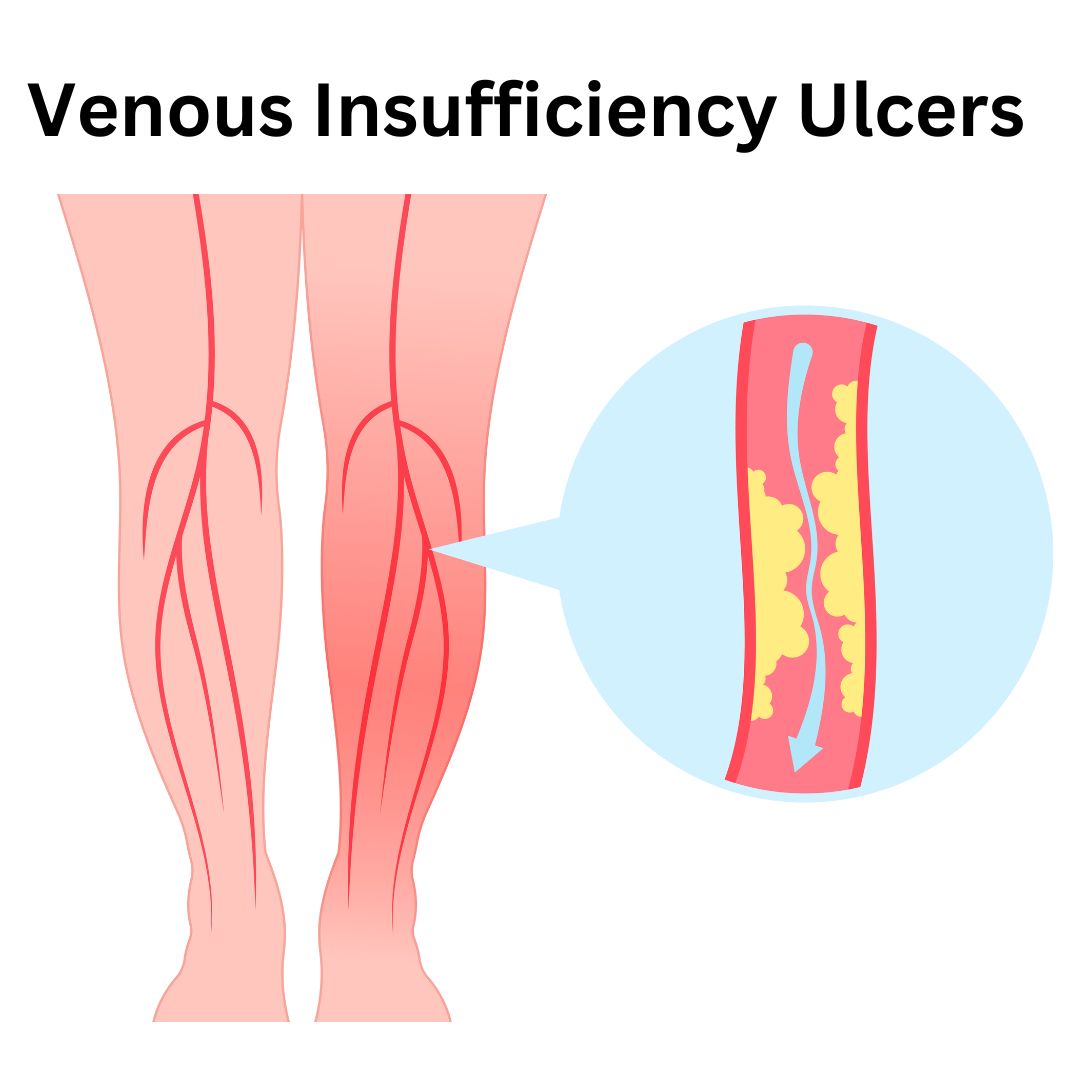- admin
- 0 Comments
Venous insufficiency ulcers, or venous pause ulcers, are constant wounds caused by inadequate blood circulation in the legs. These ulcers are generally painful, take a long time to heal and significantly impact on one’s life quality. They mainly affect people with the history of the elderly and venous disease. In this post, we will see many treatments and treatments for the management and treatment of venous insufficiency ulcers.
Understanding Venous Insufficiency Ulcers
Before addressing the treatment, it is important to understand the original cause of venous insufficiency ulcers. These ulcers are when the veins of the legs fail to provide the heart sufficiently blood. This increases the venous pressure, which begins to leak liquids in the surrounding tissues, resulting in damage to the skin and forming an ulcer.
Venous Insufficiency Ulcers Symptoms
- Persistent leg pain or heaviness
- Swelling in the lower legs and ankles
- Itching or burning sensation around the ulcer
- Hardened or discolored skin around the affected area
- Open sores that are slow to heal
Top Remedies for Venous Insufficiency Ulcers
Compression Therapy
Compression therapy for venous insufficiency ulcers has been recognized as gold standard treatment. This includes compression straps or stockings to increase blood flow and reduce inflammation. The pressure inserted by these clothing helps send blood back to the heart, which lowers blood pressure and helps recovery.
Types of Compression Therapy
- Compression Bandages: They are often used during the initial stages of treatment. They provide adjustable pressure and can be changed on a regular basis.
- Compression Stockings: Once the ulcer begins to heal, patients can use compression stockings for long-term management. These are available in various compression levels and should be worn regularly.
Wound Care and Dressings
Proper care of the wound is needed to heal venous insufficiency ulcers. This includes cleaning the wound, removing the dead tissue and applying suitable dressings to create a damp treatment environment.
Types of Dressings
- Hydrocolloid Dressings: These dressings create a damp environment and can help in the autolitic debidment, which is the body’s built-in method of eliminating dead tissue.
- Foam Dressings: Foam dressing is very absorbent and helps control wound leakage, from which the wound bed remains moist.
- Hydrogel Dressings: These dressings are beneficial for dry wounds as they provide hydration and pain relief.
Elevation and Leg Exercises
Lifting legs above the heart level can help reduce inflammation and increase blood flow. Patients should lift their legs up to 30 minutes several times a day. In addition, the workout of the foot that stimulates the calf muscle contraction can improve venous return. Simple activities like pumping ankle, lifting heel and walking can help.
Medications
Many medications can help the treatment of venous insufficiency ulcers.
- Topical Antibiotics: It helps to prevent or treat infection in the ulcer.
- Pain Relievers: OTC pain medications can help manage discomfort associated with ulcers.
- Pentoxifylline: This medication improves blood flow and oxygen delivery to the tissues, promoting ulcer healing.
Surgical Interventions
In cases where conservative therapy fails, surgical interventions may be considered. These processes attempt to improve venous circulation and reduce venous pressure.
Types of Surgical Interventions
- Vein Ligation and Stripping: This method includes tying and removing damaged veins to increase blood flow.
- Endovenous Laser Therapy (EVLT): Use of laser radiation is a minimally invasive therapy to close the veins that aren’t working properly.
- Sclerotherapy: A chemical solution is injected in the affected veins, from which they shrink and improves blood circulation.
Lifestyle Changes and Prevention
Some changes in lifestyle can have significant effects on prevention and treatment of venous insufficiency ulcers.
- Maintain a Healthy Weight: Overweight can increase venous insufficiency, which can increase the pressure on the veins.
- Exercise Regularly: Physical activity on a regular basis, especially walking, improving circulation and helping strengthen muscles in the legs.
- Avoid Prolonged Sitting or Standing: If for your profession you need to sit or stand for a long time, take a break and lift your legs up.
- Wear Compression Stockings: The continuous use of compression stockings can help avoid the recurrence of ulcers.
- Healthy Diet: A balanced diet rich in vitamins and minerals can promote the overall health and repair of the skin.
Advanced Therapies
Advanced therapy may be an alternative to consecutive ulcers that don’t respond to standard treatments:
- Negative Pressure Wound Therapy (NPWT): This process, also known as vacuum-assisted closure, works by giving negative pressure on the wound to encourage wound healing.
- Growth Factors and Skin Substitutes: These are biologically active compounds that promote tissue repair and regeneration.
- Hyperbaric Oxygen Therapy (HBOT): This therapy includes pure oxygen breathability in the pressure environment, which improves the supply of oxygen in the wound and promotes healing.
Conclusion
Venous insufficiency ulcers are a complicated and difficult condition for ulcer management, however with right combination of treatment, quite improvement is possible. From compression remedy and wound care to way of life adjustment and advanced remedy, sufferers have lots of options for managing and treatment of their ulcers. If you or a cherished one in every of you have got venous insufficiency ulcers, speak to a wound care expert. They can create personalized remedy plans based to your precise needs and guide you thru the recovery process. Remember, set off intervention and constant care is necessary to correctly control the VI ulcers.
